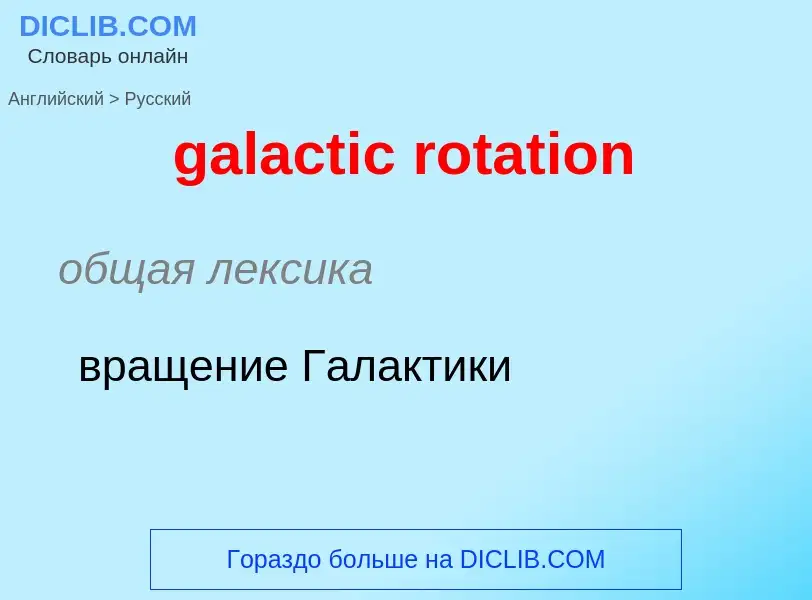Translation and analysis of words by ChatGPT artificial intelligence
On this page you can get a detailed analysis of a word or phrase, produced by the best artificial intelligence technology to date:
- how the word is used
- frequency of use
- it is used more often in oral or written speech
- word translation options
- usage examples (several phrases with translation)
- etymology
galactic rotation - translation to russian
общая лексика
вращение Галактики
[rəu'teiʃ(ə)n]
общая лексика
вращение
чередование
севооборот
ротация
смена (культур)
вихрь
вращательное движение
вращательный
кругооборот
кругообращение
периодическое повторение
поворачивание
поворот
ротор
собственное вращение
физиология
круговорот
строительное дело
угол поворота (сечений)
существительное
общая лексика
вращение
оборот
чередование
периодическое повторение
перемещение по кругу (кораблей в круговом ордере)
спорт
чередование игроков
военное дело
замена личного состава или частей
сельское хозяйство
севооборот
ротация
лесное дело
оборот рубки
гидрология
вихрь
Definition
Wikipedia
.png?width=120)
The rotation curve of a disc galaxy (also called a velocity curve) is a plot of the orbital speeds of visible stars or gas in that galaxy versus their radial distance from that galaxy's centre. It is typically rendered graphically as a plot, and the data observed from each side of a spiral galaxy are generally asymmetric, so that data from each side are averaged to create the curve. A significant discrepancy exists between the experimental curves observed, and a curve derived by applying gravity theory to the matter observed in a galaxy. Theories involving dark matter are the main postulated solutions to account for the variance.
The rotational/orbital speeds of galaxies/stars do not follow the rules found in other orbital systems such as stars/planets and planets/moons that have most of their mass at the centre. Stars revolve around their galaxy's centre at equal or increasing speed over a large range of distances. In contrast, the orbital velocities of planets in planetary systems and moons orbiting planets decline with distance according to Kepler’s third law. This reflects the mass distributions within those systems. The mass estimations for galaxies based on the light they emit are far too low to explain the velocity observations.
The galaxy rotation problem is the discrepancy between observed galaxy rotation curves and the theoretical prediction, assuming a centrally dominated mass associated with the observed luminous material. When mass profiles of galaxies are calculated from the distribution of stars in spirals and mass-to-light ratios in the stellar disks, they do not match with the masses derived from the observed rotation curves and the law of gravity. A solution to this conundrum is to hypothesize the existence of dark matter and to assume its distribution from the galaxy's center out to its halo.
Though dark matter is by far the most accepted explanation of the rotation problem, other proposals have been offered with varying degrees of success. Of the possible alternatives, one of the most notable is modified Newtonian dynamics (MOND), which involves modifying the laws of gravity.

.png?width=200)


![plane of orbit]] and [[axial tilt]] (for Earth). plane of orbit]] and [[axial tilt]] (for Earth).](https://commons.wikimedia.org/wiki/Special:FilePath/AxialTiltObliquity.png?width=200)



